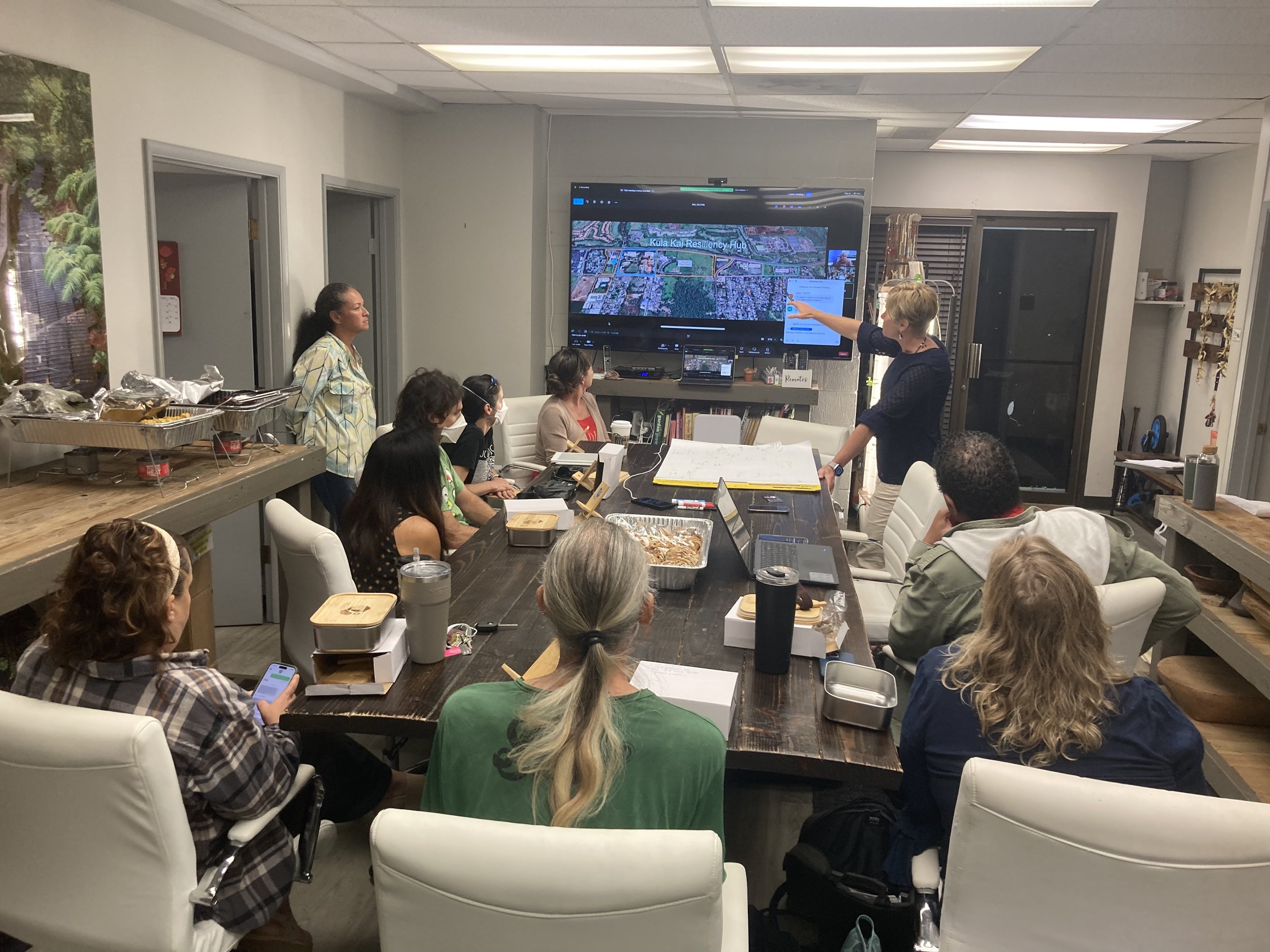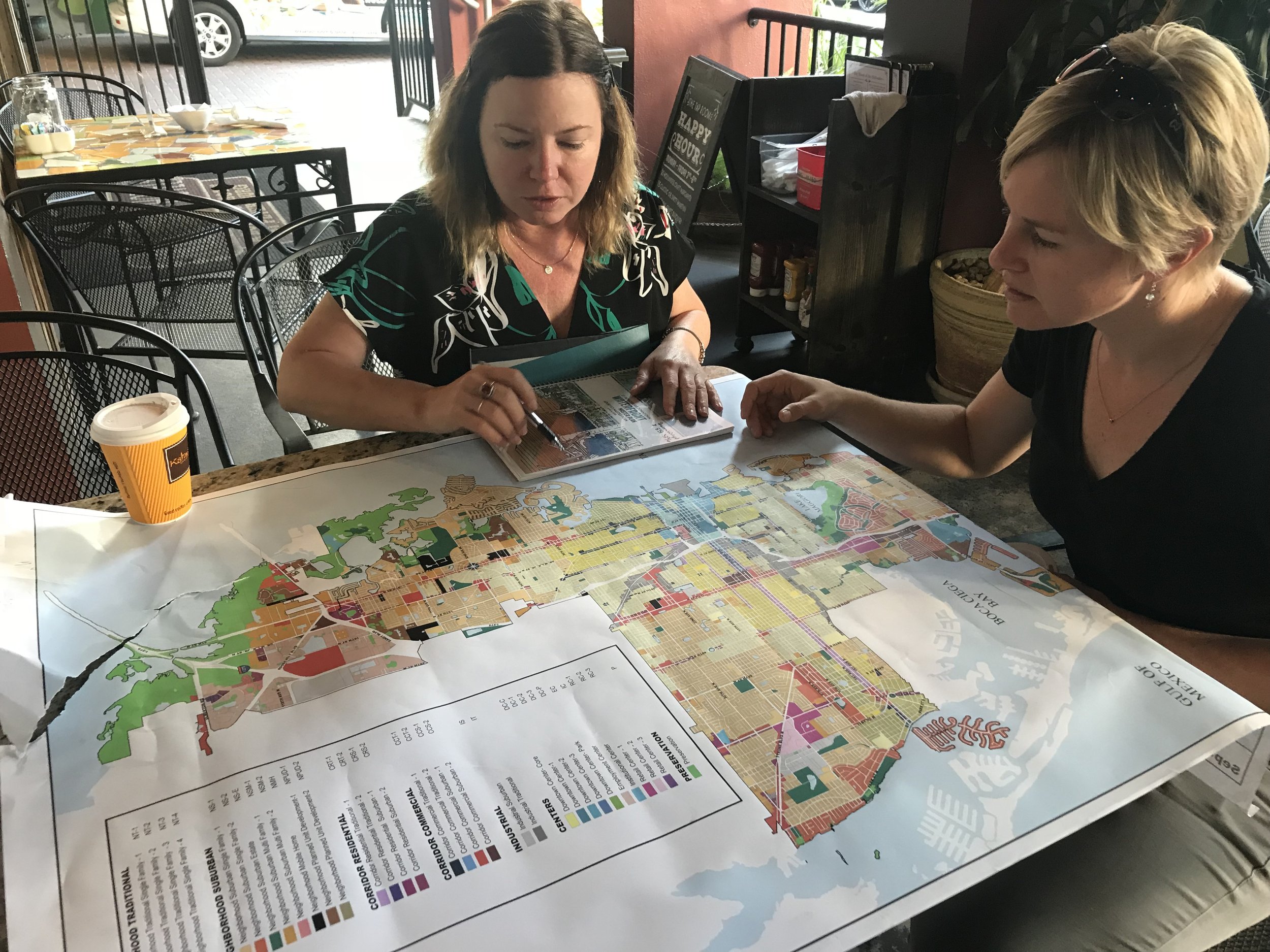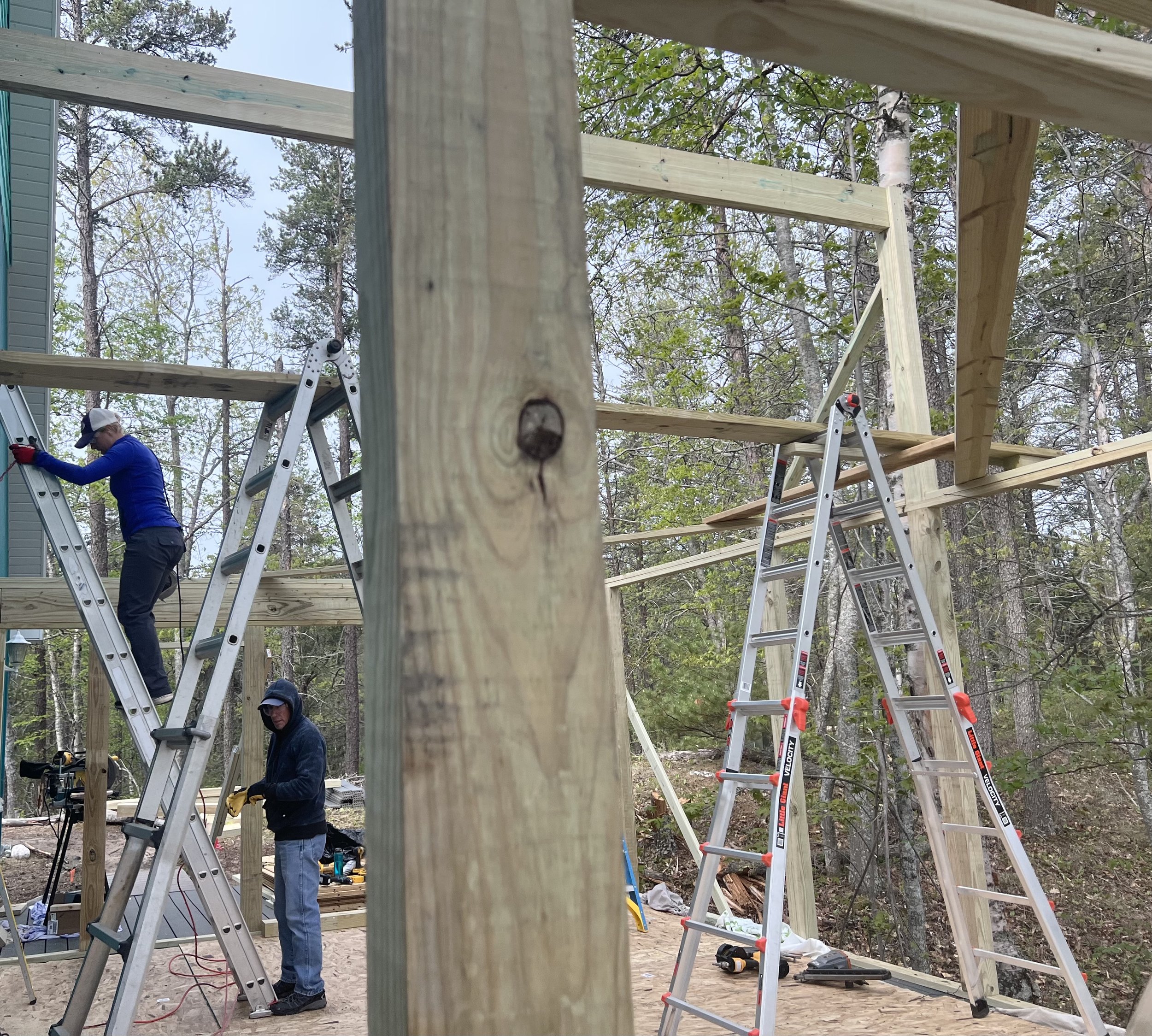What are Resilience Hubs?
Anchoring year-round community support and care
Resilience Hubs are physical buildings and/or enclosed structures located in neighborhoods or rural areas that serve community members year-round and are enhanced to provide continuous support throughout any type of disruption, from extreme weather events to health crises and beyond. They provide a community “home” and trusted-space for gathering, programming, skill-building, sharing of resources and information, support, and enhancing quality of life.
There are several core components that make up the foundation of any resilience hub. These core components provide the scaffolding of what enables a Resilience Hub to function year-round and in the event of any disruption. They include:
Programs and Services
Information & Connectivity
Built & Natural Spaces
Power Systems & Backup
Operations & Maintenance
Accessibility & Transportation
Just as no two neighborhoods or rural areas are exactly alike, there are no two Resilience Hubs exactly the same. Resilience Hubs reflect the unique community and mixture of cultures of a specific geographic area. The core components listed above ensure that each Resilience Hub is integrating and considering all core components of a Hub while designing and customizing the spaces to serve the relevant and specific needs of the community.

What is the Resilience Hub Collaborative?
What does RHC include?
SUPPORT & SHARING
The Resilience Hub Collaborative (RHC) is an opportunity for community-based leaders and community members to gather and share ideas, resources, and methodologies for designing, planning, and implementing Resilience Hubs.
BELONGING & THRIVING
The RHC provides a space for belonging, solidarity, and learning; where community leaders come together and weave concepts and approaches to enable Resilience Hubs to support members of the community to thrive year-round while also utilizing resources to prepare for and accommodate disruptions.
IMPLEMENTATION
The RHC is focused on action and implementation. We move beyond informational presentations to ensure all participants are able to move forward on Hub development while more deeply supporting the members of their communities.
-
Our team of experts provide individual and team support tailored to your specific site, region or project needs
-
We have a wide range of tools and resources developed with communities and partners actively working on Hub development.
-
We offer various trainings and workshops based on specific topics and priority areas of focus for communities. Our team includes the originator of the Resilience Hub concept who has over 13 years of experience providing workshops, presentations, and train-the-trainer experiences communities and partners
-
The RHC provides a safe space for community members, community-based partners, and RHC partners to share resources and actively learn from each others wisdom and experience
-
Members of the RHC may also request in-person and site-specific or regionally-specific resource development in addition to direct support and coaching.
Make it special.
For more information on these offerings, please request to join RHC here
Resilience Hubs are Unique:
Different Types/Styles
By Geographic Size
Rural - Rural hubs can provide space for community gatherings, storage of community supplies and resources, areas for special services such as food processing while also acting as the node for response in event of a disruption.
Rural Hub Examples:
Hawaii Volcano Circus, Big Island
Ke’ane Resilience Hub, Maui
Na Moku Ke’anae , Maui
Small Town- Hubs in small towns can provide space for sharing culturally-relevant resources and ideas while also bringing people together around special events. They are often part of a network of Hubs and act as satellite sites to a central hub in a bigger urban space.
Small Town Hub Examples:
Living Pono Project, Maui
Duluth, MN
Hope Center, Roanoke
Semi-Urban- towns and smaller cities benefit from a network of neighborhood Hubs that provide services and programs in content specific areas. They can share ideas, resources, information pre-event and coordinate in response to disruption.
Semi-Urban Hub Examples:
Temple Beth Shalom, San Leandro
Cambridge Community Center, MA
Dream Center, Dubuque
Northside Community Center, A2
Urban - Resilience Hubs were born in deep urban spaces to help meet the needs of community members year-round and in event of disruption. Urban hubs serve specific neighborhoods and center in safety, care and belonging.
Urban Hub Examples:
Boyle Heights Arts Conservancy, LA
Lennox Center, Detroit
Red Hook Initiative, Brooklyn NY
By Site Type
Community Servicing Spaces provide neighborhood-based programming and services to meet the varying needs of the surrounding community. These spaces can exist within standalone structures of different sizes and also within other site types such as faith-based centers.
Small Business Incubators operate as anchor locations for community-based entrepreneurs to obtain education and resources for starting local neighborhood-serving businesses. Incubators can exist as independent small- to medium-size structures and also within another site type such as community-serving spaces.
Community-Managed Recreation Centers serve as neighborhood-based nodes of activity for exercise, play, youth & elder care, educational & maker spaces, art & film studios, and community services. This site type is large enough to house commercial kitchens, equipment and storage, and function as emergency support spaces.
Multifamily Housing serve as trusted, multi-level centers for people living in a given neighborhood. This site type can meet multiple needs by having resilient building systems and communications (solar, battery, wifi, charging stations), local gathering spaces, social and family services, community gardens, and much more.
Senior Center/Senior Living Facilities are universally designed to meet the needs of older adults over 65 years of age requiring different levels of care. This site type can exist as its own structure, providing specific programming and services for this group. It can also exist within another site type such as multi-family housing, faith-based centers, and community-serving spaces.
Faith-focused Centers and Spaces are community-based institutions serving large, multi-generational groups usually associated with a specific faith. This site type is often located in the neighborhood it serves. It includes gathering and event spaces, entertainment venues, potential for temporary community shelter, food services, and other community services.
Centers for Persons with Disabilities specifically supports people with certain types of disabilities. This site type is often its own structure, with a physical design and decor that supports a specific accessibility needs or multiple accessibility needs. It can also exist within another site type such as multi-family housing and community-serving spaces.
Community Farms are different than community gardens. Community farms include permanent buildings and structures that can be transformed into a functioning Resilience Hub while still having a direct connection to food growth, processing and distribution. They include gathering spaces, storage, backup power systems, and often support non-farming education and activities.
Resilience Hubs function most effectively when located in community-managed and/or community-owned spaces that promote belonging, safety, and collective care. Certain types of buildings and structures lend themselves to being Resilience Hubs, while others do not. The following types of sites are optimal for establishing a new Resilience Hub or enhancing an existing community-serving space.

What is NOT a Resilience Hub
+
=
NOT a Resilience Hub
This is a resilient power project. We love resilient power projects and want to see renewable energy with battery backup all over. However, resilient power is just one component of a Resilience Hub. This is a critical misunderstanding from many energy-focused businesses and non-profits who neglect the other five core components.
+
=
NOT a Resilience Hub
This is an emergency shelter. Emergency shelters provide space for people to shelter in disruption. Resilience Hubs are not emergency shelters. Resilience Hubs may provide temporary sheltering or sleeping spaces but they are not disruption focused. They function all year round and in three conditions: steady, disruption, and recovery.
+
=
NOT a Resilience Hub
This is a community garden. Community gardens are excellent additions to Resilience Hubs; however, they are not a Hub. Resilience Hubs require a physical building and the ability to support all six core components. Community gardens are wonderful and welcomed additions that enhance and improve a Hub overall.
Resilience Hubs are unique to the community they serve. They come in many different shapes, sizes, and styles. However, what makes them a Resilience Hub is that they are anchored in community, serve community members needs, and support all six core components in all three conditions. Resilience Hubs are not another name for emergency shelters, emergency distribution sites or emergency serving facilities. They are focused on serving community year-round while being enhanced to function during a disruption and throughout recovery.
Sites that are NOT good Resilience Hubs
Based on experience, we discourage development of Resilience Hubs in the following type of facilities:
Government-owned and managed facilities including libraries, police and fire stations.
Stadiums and large sports and/or entertainment facilities.
Personal homes will create insurance issues for the homeowner and are often not open to all in the community.
Shipping containers and storage containers. Especially not retrofitted with windows and climate controls.
Schools and learning institutions where children’s safety is the top priority.
If you have questions about our recommendations or would like further details, please reach out to RHC@embodiedecosystem.org

Join the Resilience Hub Collaborative
Interested in joining the RHC? Click below to get more information and join.




























